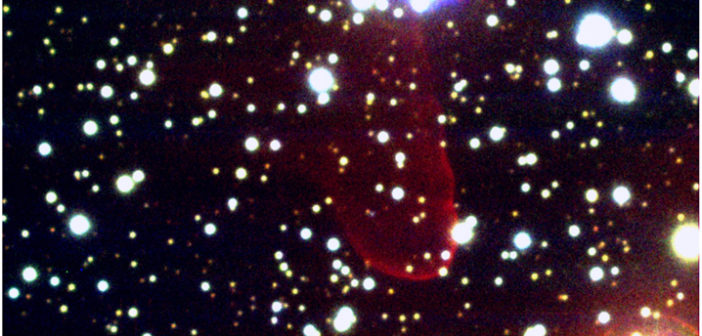Though it’s not uncommon for stars to snack on their stellar companions from time to time, it’s rare for them to eat their associates entirely. This is the scenario proposed for black widow pulsars — tiny, dense stellar remnants that rotate rapidly, produce beams of radio emission and fierce winds, and, like the spiders from which they get their name, eventually consume their companions. Black widow pulsars may be the missing link in the creation of single millisecond pulsars — those that rotate hundreds to thousands of times a second but lack a neighboring star to lend them the angular momentum to do so. In a new article, a team led by Roger Romani (Stanford University) used images and spectra to study the first known black widow pulsar, PSR J1959+2048. The image above (click for the full view) reveals the shock created by the pulsar’s outflowing wind colliding with interstellar material. Romani and collaborators used this rare sight — there are only nine known pulsar wind nebulae with associated shocks — to begin the investigation into whether this pulsar will lose too much energy to fully consume its companion. To learn more about this unusual object, check out the full article below!
Citation
“The Bow Shock and Kinematics of PSR J1959+2048,” Roger W. Romani et al 2022 ApJ 930 101. doi:10.3847/1538-4357/ac6263

